Spaced out in San Pedro de Atacama
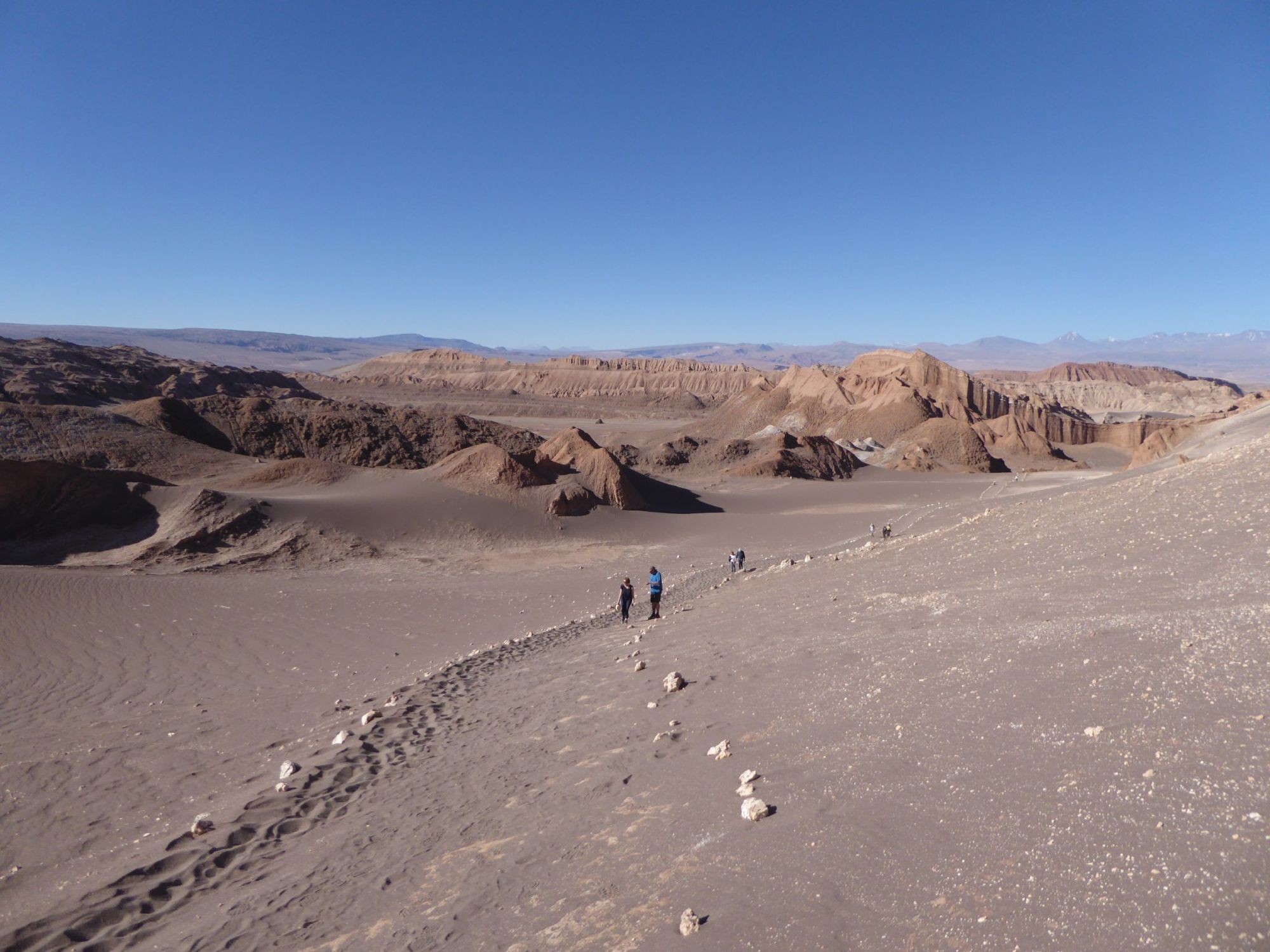
There are few places on earth as inhospitable to life as the Atacama Desert. So it follows that there can be few worse places for a bus to break down, miles from the nearest town, some 4,600 metres above sea level.
Our journey across the mountains from Argentina to Chile had been smooth and uneventful up to that point, passing through some of the most spectacular scenery of our trip so far. From Purmamarca the road snaked up and up through surreal multi-coloured mountains, up onto the high altitude grassland known as the puna. Here, tufts of yellowish grass clung to the dusty grey earth, the silhouette of even higher mountains looming on the horizon.
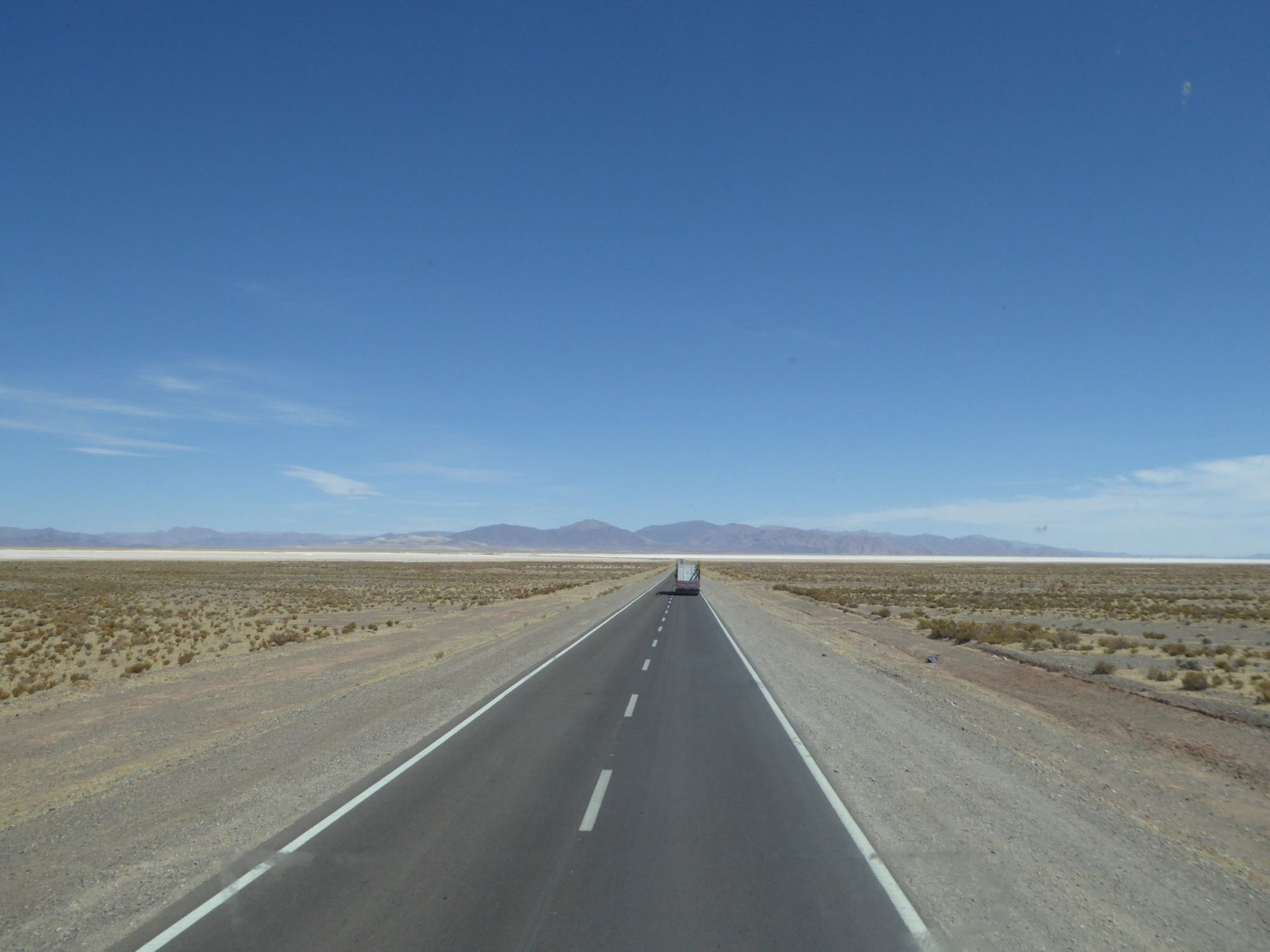
The road cut across the blinding white Salinas Grandes salt flats, then up higher towards the Paso de Jama and the Chilean border post, which sits at 4,200 metres above sea level. Once we were over the border into Chile the landscape became even weirder, an empty and desolate desert ringed with chocolate brown volcanoes streaked white with snow.
At first we thought the bus had stopped so that the two drivers could swap, as had already happened a couple of times during the journey. But this time there was a beeping sound, some sort of alarm, and we could hear panels being opened on the side of the bus. With the engine switched off there was no air conditioning, and the bus began to slowly bake in the desert sun. The altitude started to take its toll, and I felt my breathing become more laboured as the clock ticked past thirty minutes, then forty, then an hour of fruitless attempts to repair the bus. My mouth started to dry out, and I began to feel dizzy. I started to panic, remembering horror stories I'd read about tourists dying from altitude sickness.
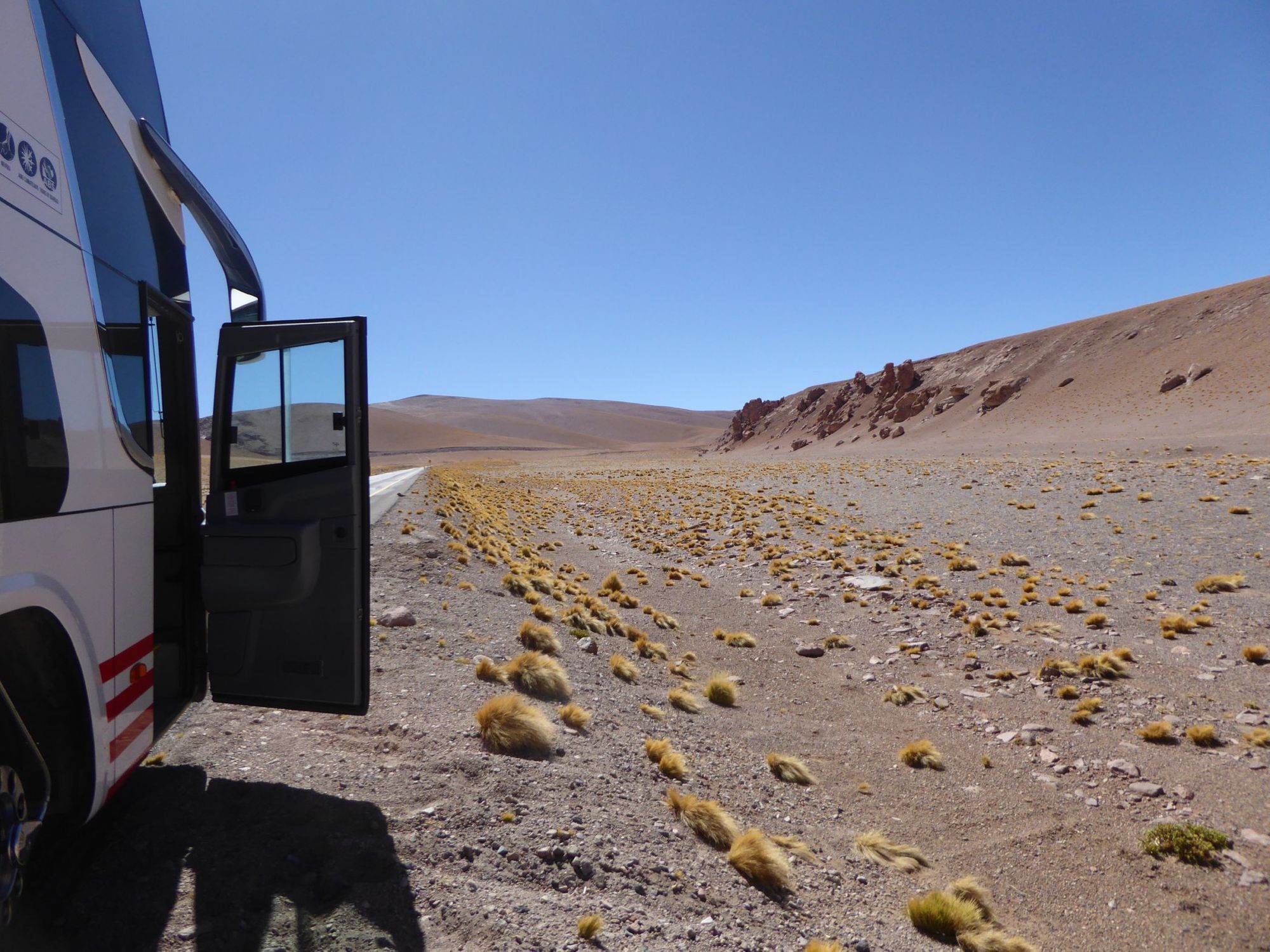
Luckily the bus company we'd chosen carries oxygen on this route. Polly found the driver and explained in her best Spanish that I was suffering, and that I needed a go on their tank. After five minutes breathing in oxygen I felt much better, despite a rising anxiety that we might be stuck here overnight.
After two and a half hours stuck by the roadside, a combined team of drivers and passengers were able to bodge together a fix for the torn radiator hose using a plastic bottle and rubber bands, and we were finally on the move again. But there was no respite just yet, as the road headed still higher, up to a dizzying 4,800 metres above sea level, where the volcanic landscape became still more barren, the road lined by weird white salt crystals and surreal turquoise lagoons. Eventually the high plains came to an end, and we rapidly began to descend towards our destination, the little desert town of San Pedro de Atacama, situated at a relatively benign elevation of 2,400 metres above sea level.
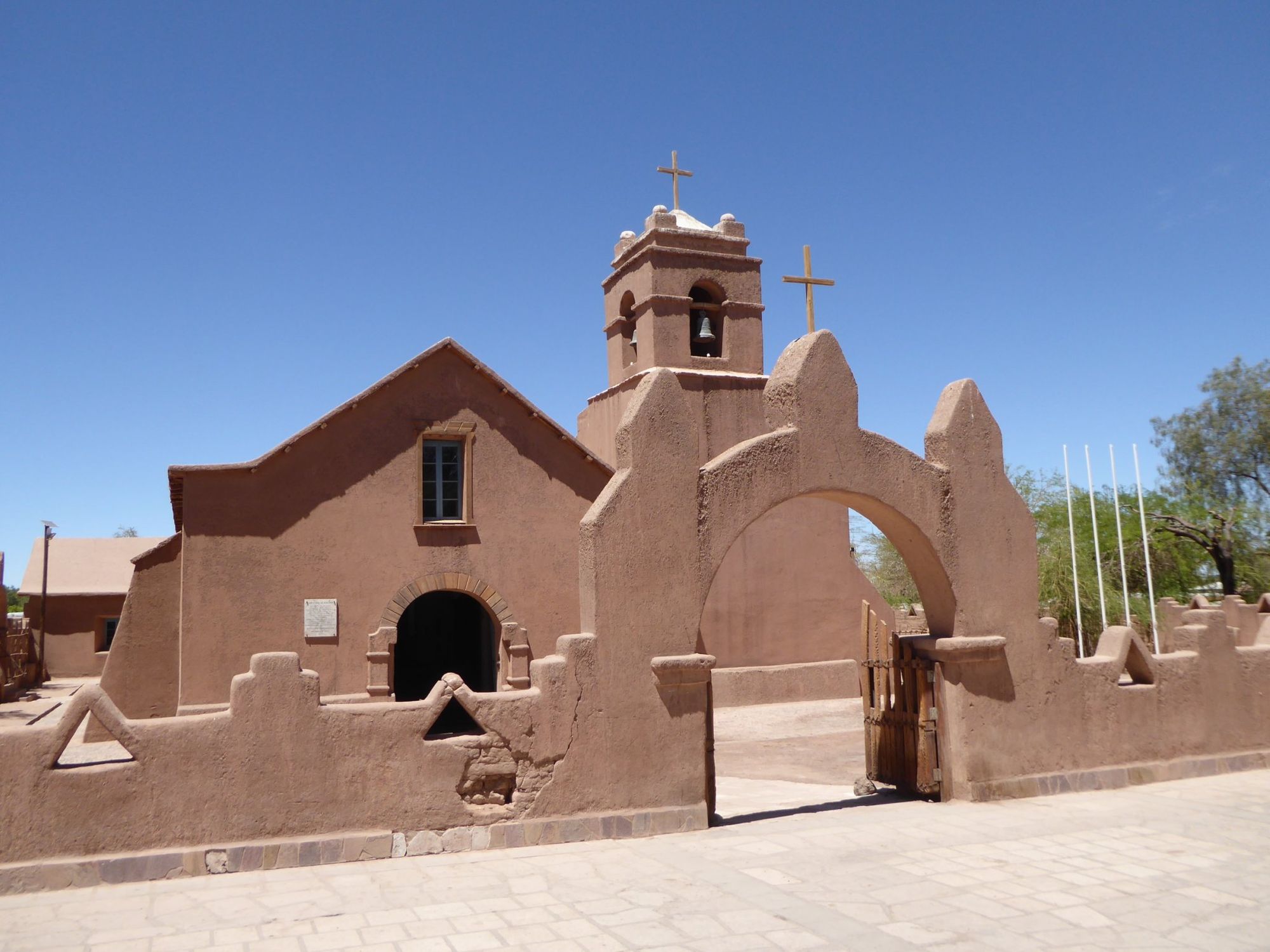
San Pedro is an unlikely oasis, really just a handful of streets, absolutely chock-full of tourists. It was the first place where we really felt like we were on the 'Gringo Trail'; all through Argentina we'd been wondering where all the other backpackers were, and it seemed that most of them were here. For the first time in weeks we heard more people speaking English than Spanish, and initially we weren't sure we liked it. After the cheap steaks and wine of Argentina we were shocked by how expensive San Pedro was. It seemed like there was little to do in the town except eat and drink in overpriced restaurants, buy overpriced souvenirs or book a tour at one of the dozens of travel agencies that line the streets.
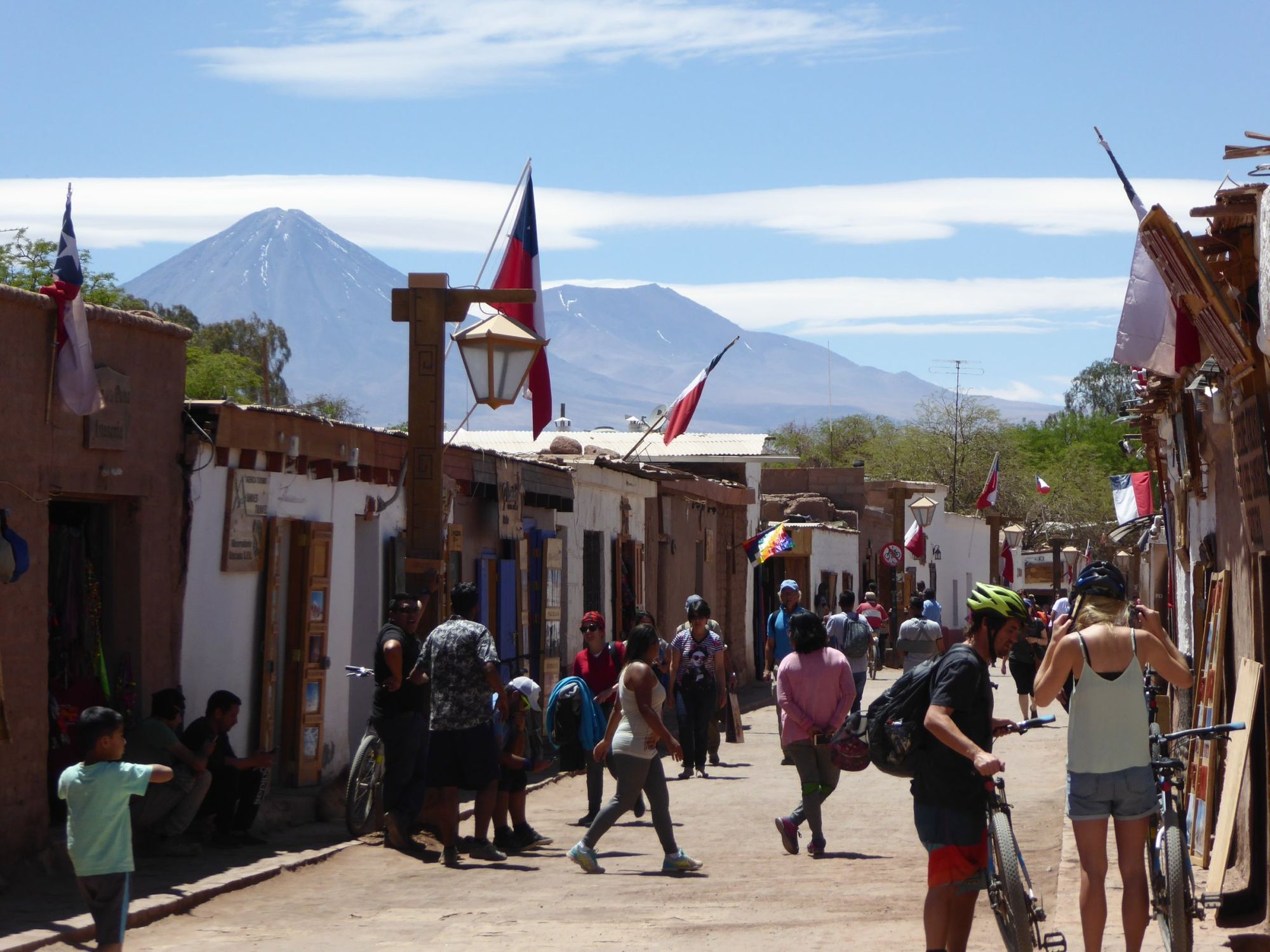
But we had five days in San Pedro, longer than anywhere else since Buenos Aires, and we started to appreciate the luxury of slowing things down for a few days. We lucked out with our hostel, a chilled out place on the edge of town with hammocks and a kitchen where we could cook our own food and save a few pesos. We also had plenty of time to weigh up all the different tours on offer and work out how best to spend our time in Chile.
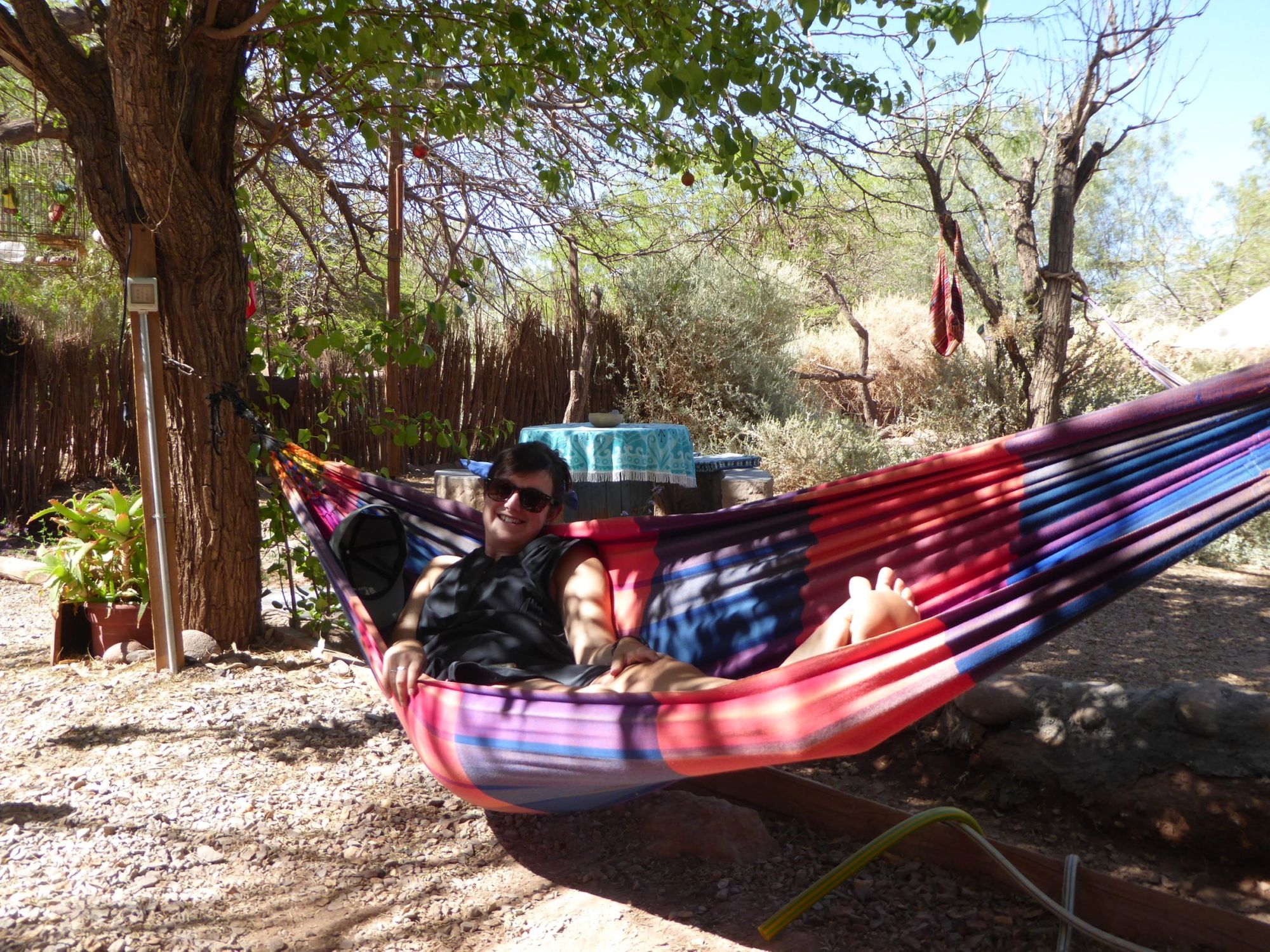
The tours promising flamingo-filled lagoons and smouldering geysers were tempting, but we knew that we were going to see similar things in Bolivia, so we opted instead for a trip to the Valle de la Luna - the 'Valley of the Moon'. This otherworldly landscape of vast sand dunes and weird rock formations sparkling with salt crystals is situated just outside San Pedro, sculpted over centuries by wind and water.
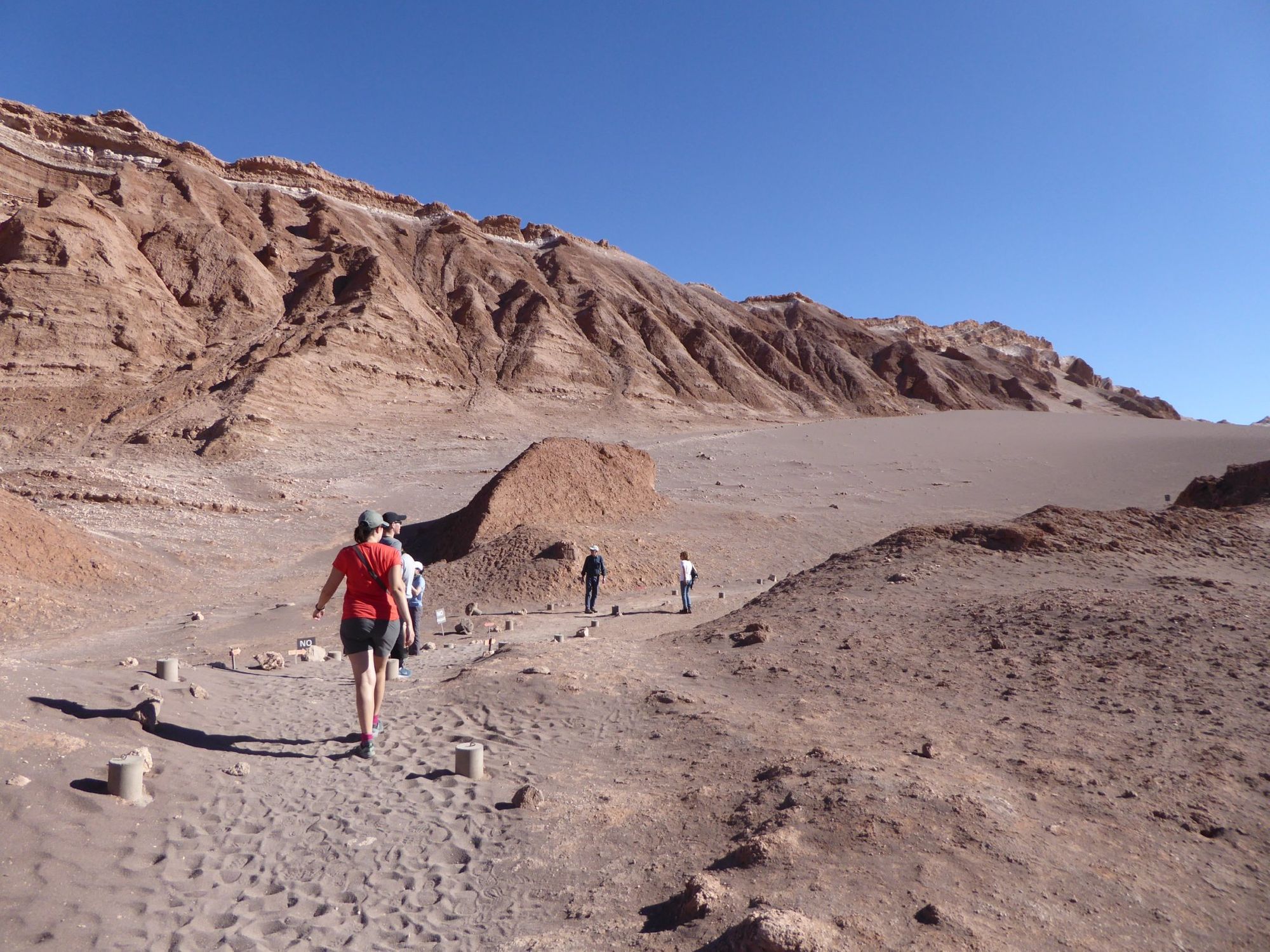
Our tour of the Valley culminated at a clifftop viewpoint as the sun began to set. Way below us the serried rocks glowed a warm chocolate brown, the sinking sun casting long shadows across the valley floor. Then, as the sun dropped below the horizon, the chain of volcanoes on the horizon turned first red, then orange, then a sort of dusky pink as a freshening breeze began to whip across the clifftops.
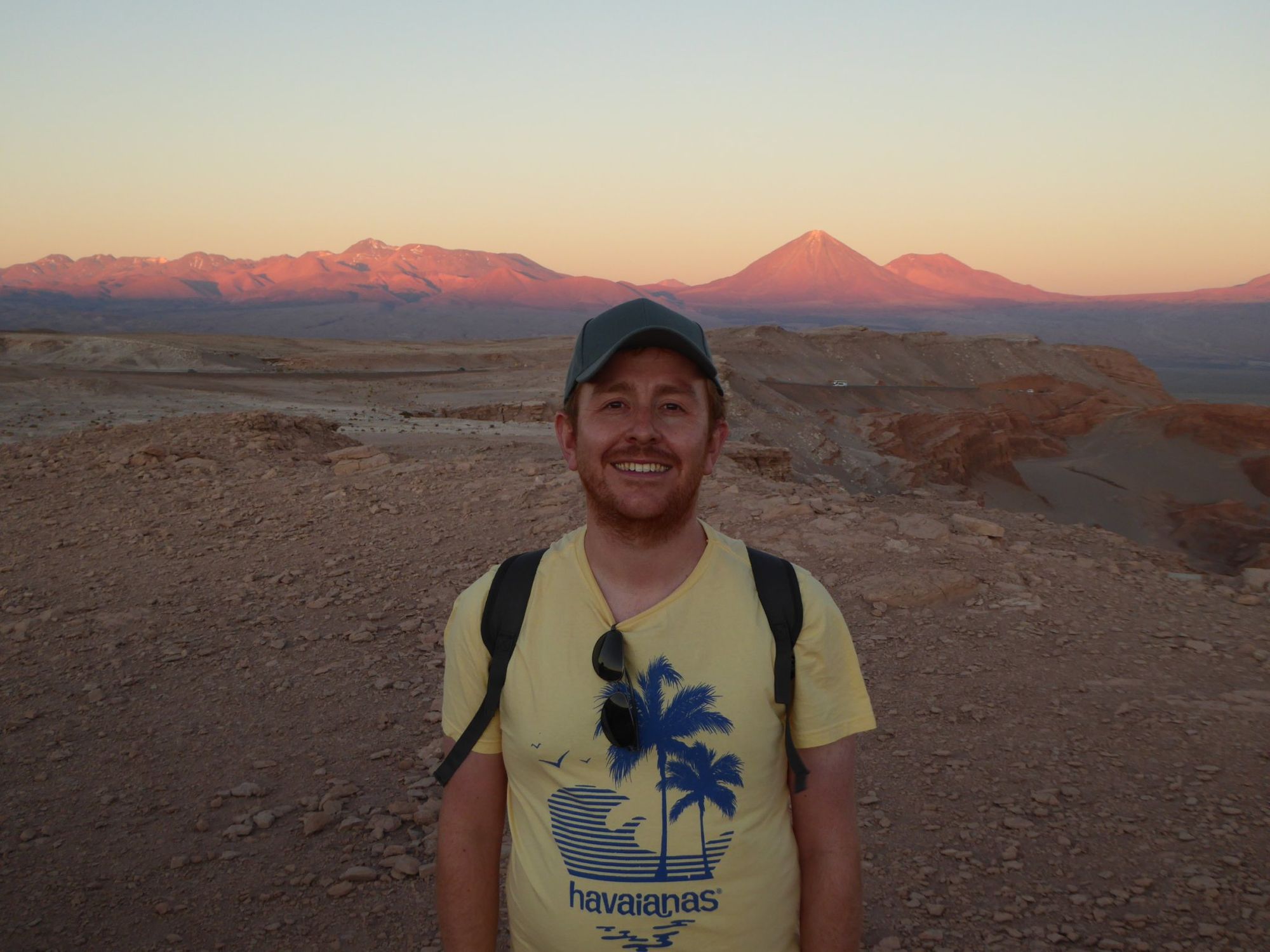
The outer space theme continued the next day when we visited the Museo del Meteorito, a small museum housed underneath a geodesic dome on the edge of San Pedro. The Atacama Desert is one of the world's top hunting grounds for ancient meteorites, as the dry and stable conditions mean that these extraterrestrial rocks can lie undisturbed and incredibly well preserved for millennia. Although the museum was a little jargon-heavy at points, it did a good job of explaining how meteorites can tell us about the history of the universe. There was also a 'hands-on' section where you could feel the incredible weight of some of these visitors from outer space, more like lumps of metal than rocks.
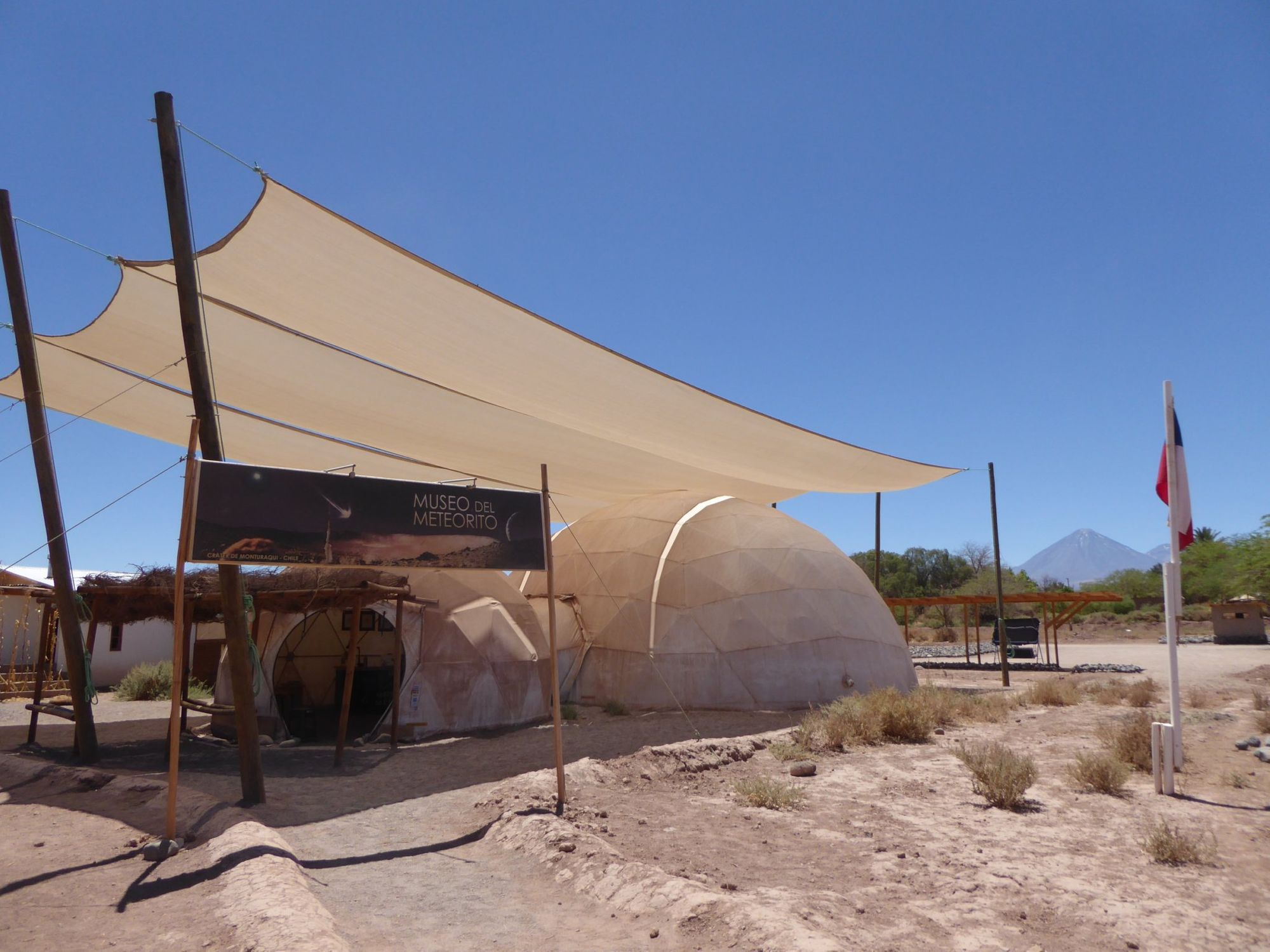
That evening, with our curiosity about the universe piqued, we headed out into the desert on a different type of tour. The lack of light pollution in the Atacama means that it's perfect for stargazing, and we'd signed up for a Big Bang-themed tour of the night sky with an enthusiastic local astronomer named Rodrigo. On arrival at the observation site we were each issued with a poncho for warmth, and led out to a circle of office chairs arranged around a telescope.
We kicked off with some naked eye astronomy, as Rodrigo showed us some key constellations, pointed out the disc shape of the Milky Way clearly visible in the sky, and explained that three of the stars we could see were actually planets: Mars, Jupiter and Saturn. We then took a closer look at the heavens with his telescope, a relatively modest-looking bit of kit that was powerful enough to clearly see the rings of Saturn and the craters on the surface of the moon.
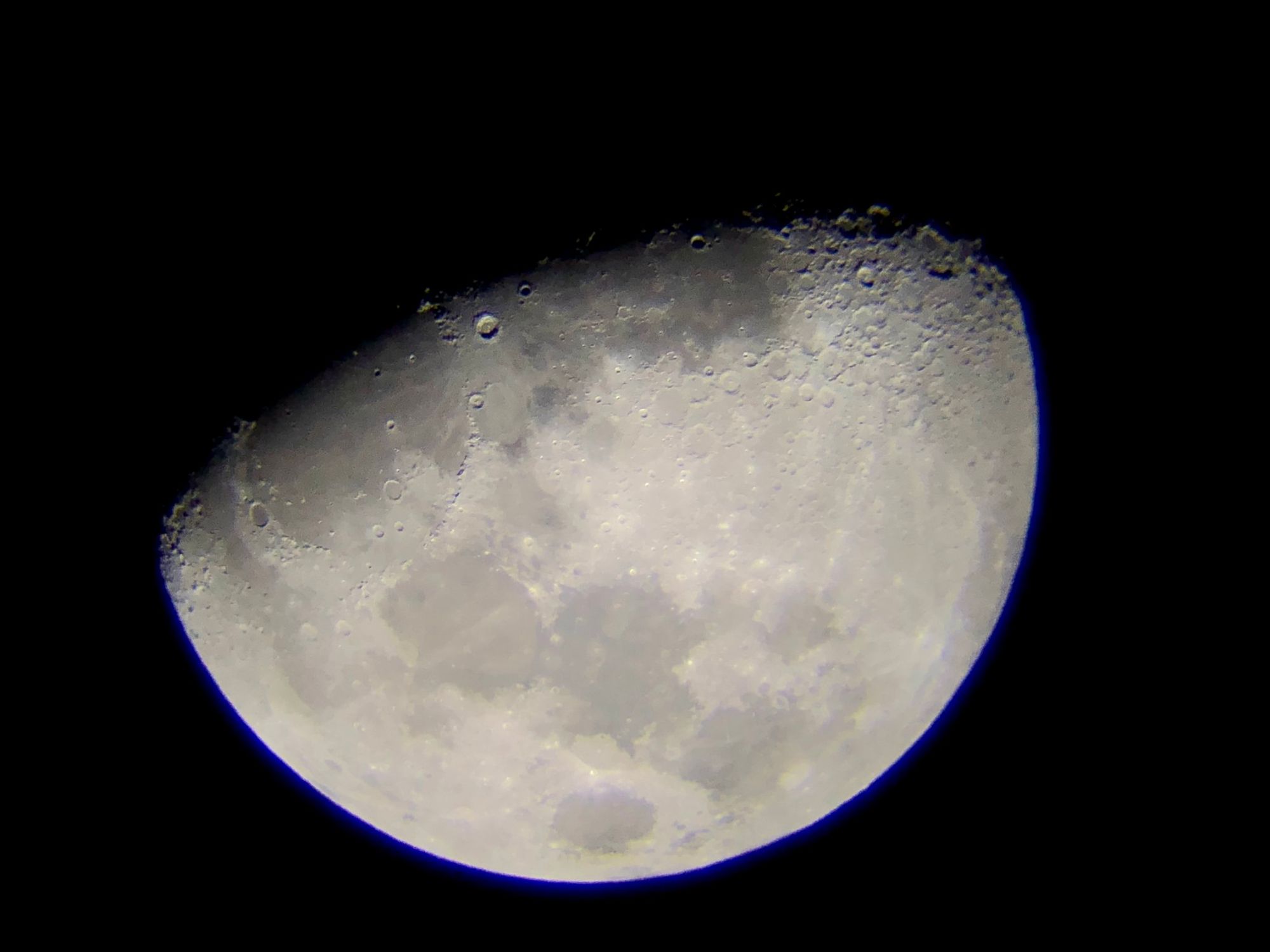
Rodrigo's passion for astronomy was infectious; he showed us how to tell the difference between young and old stars, explained the processes involved in the Big Bang, and speculated on the existence of extraterrestrial life. The evening was soundtracked by his carefully constructed space-themed playlist, encompassing everything from 'Lucy in the Sky with Diamonds' to Jamiroquai's '90s disco-pop classic 'Cosmic Girl'. We also left with some fantastic pictures taken through his telescope using just my iPhone, as well as a cheesy shot of the two of us in front of the Milky Way clad in our ponchos. It looks Photoshopped, but I promise you it's not!
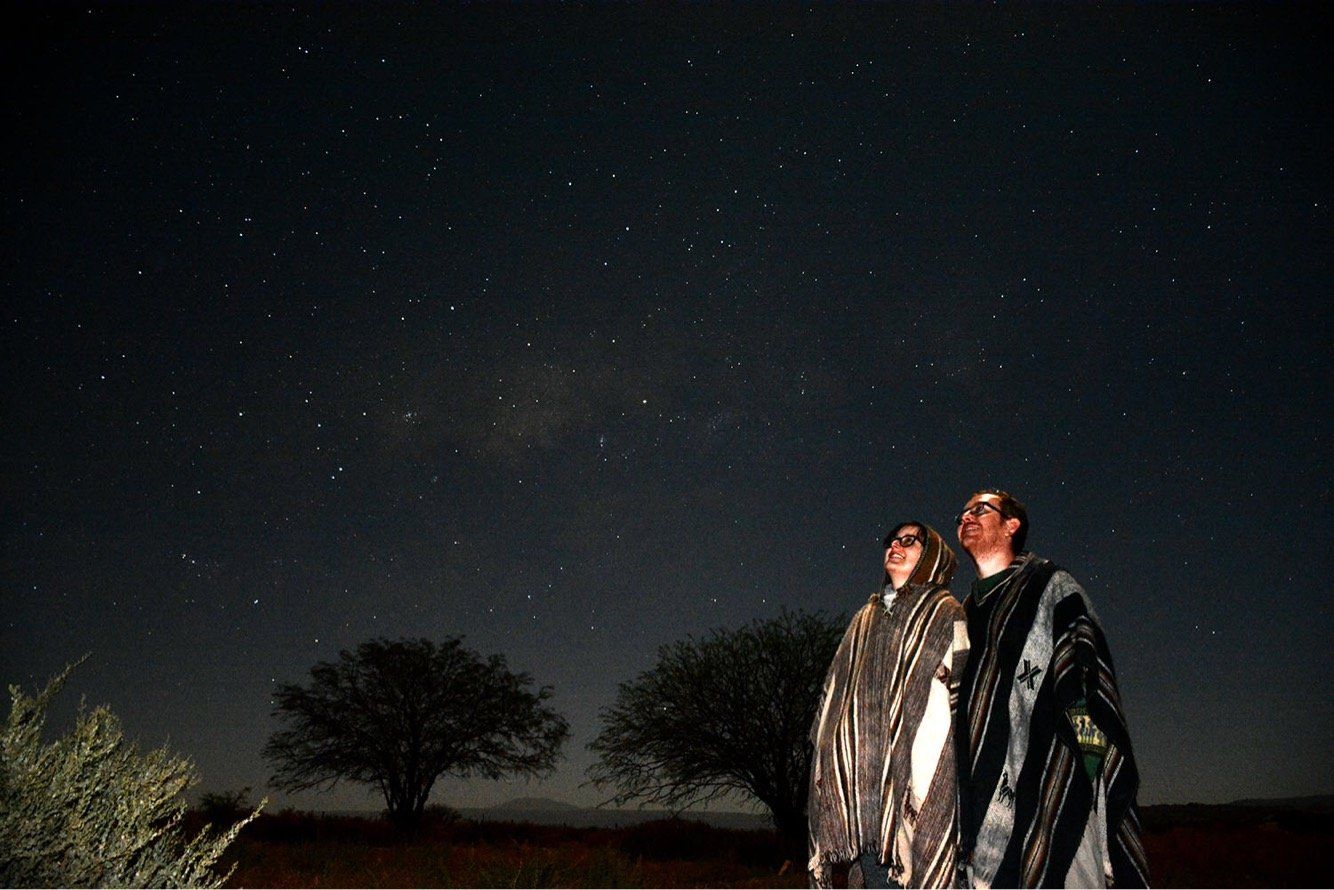
After a traumatic start to our brief stay in Chile we really enjoyed our time in San Pedro. It's an odd little town that feels overrun with gringos at times, but it's situated in the middle of one of the world's most extraordinary environments. And it's also just a short distance from the border with Bolivia, the next country on our itinerary...

